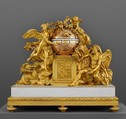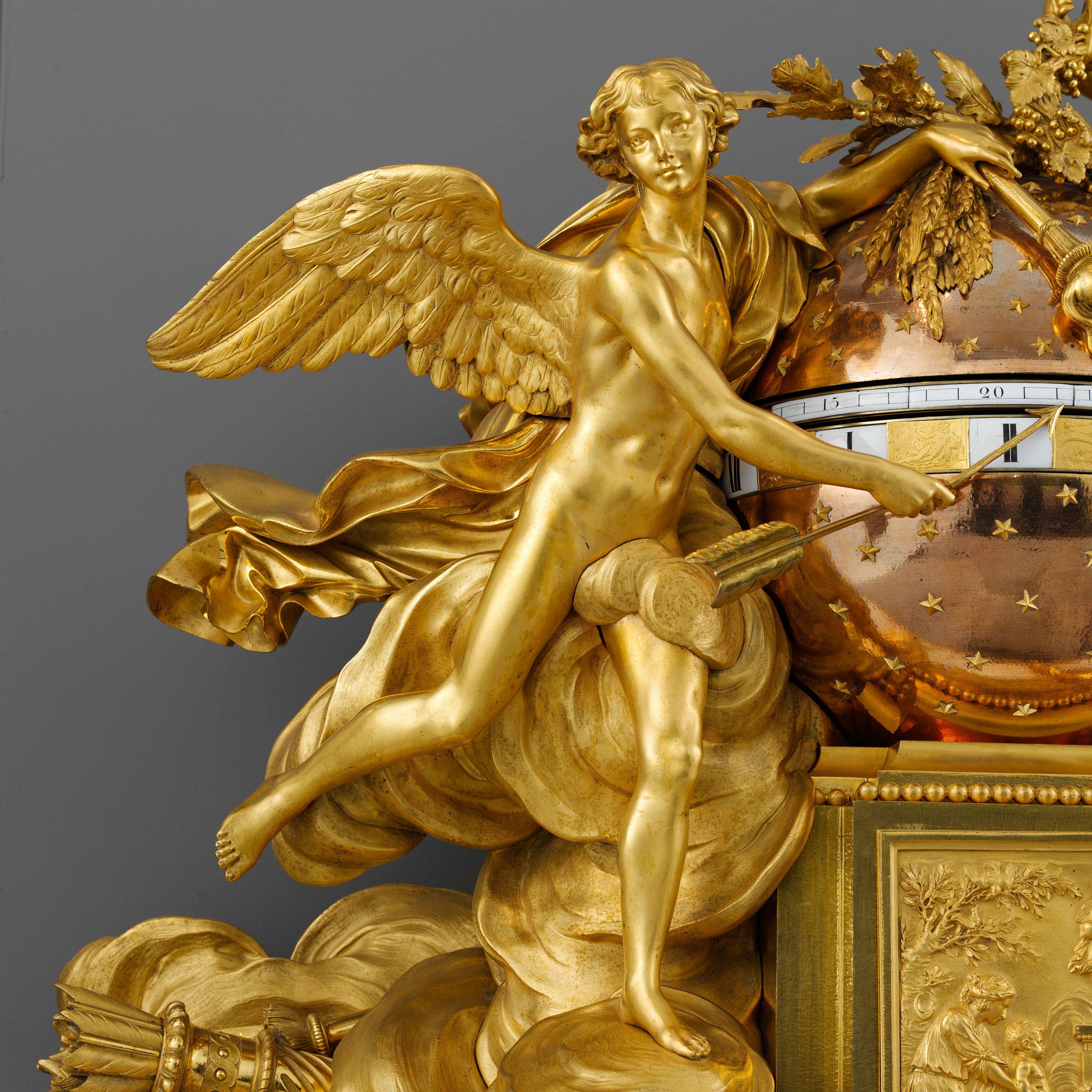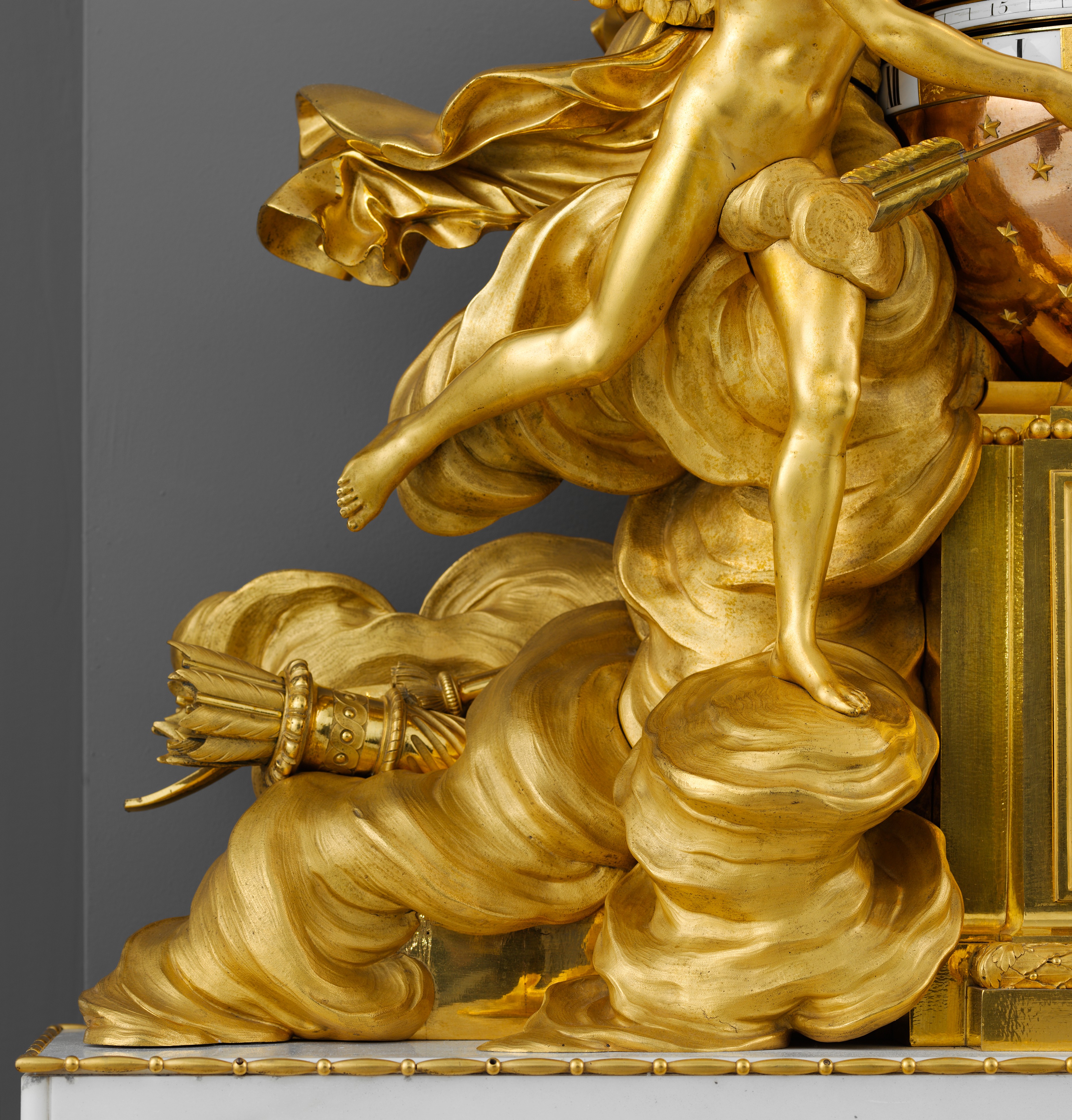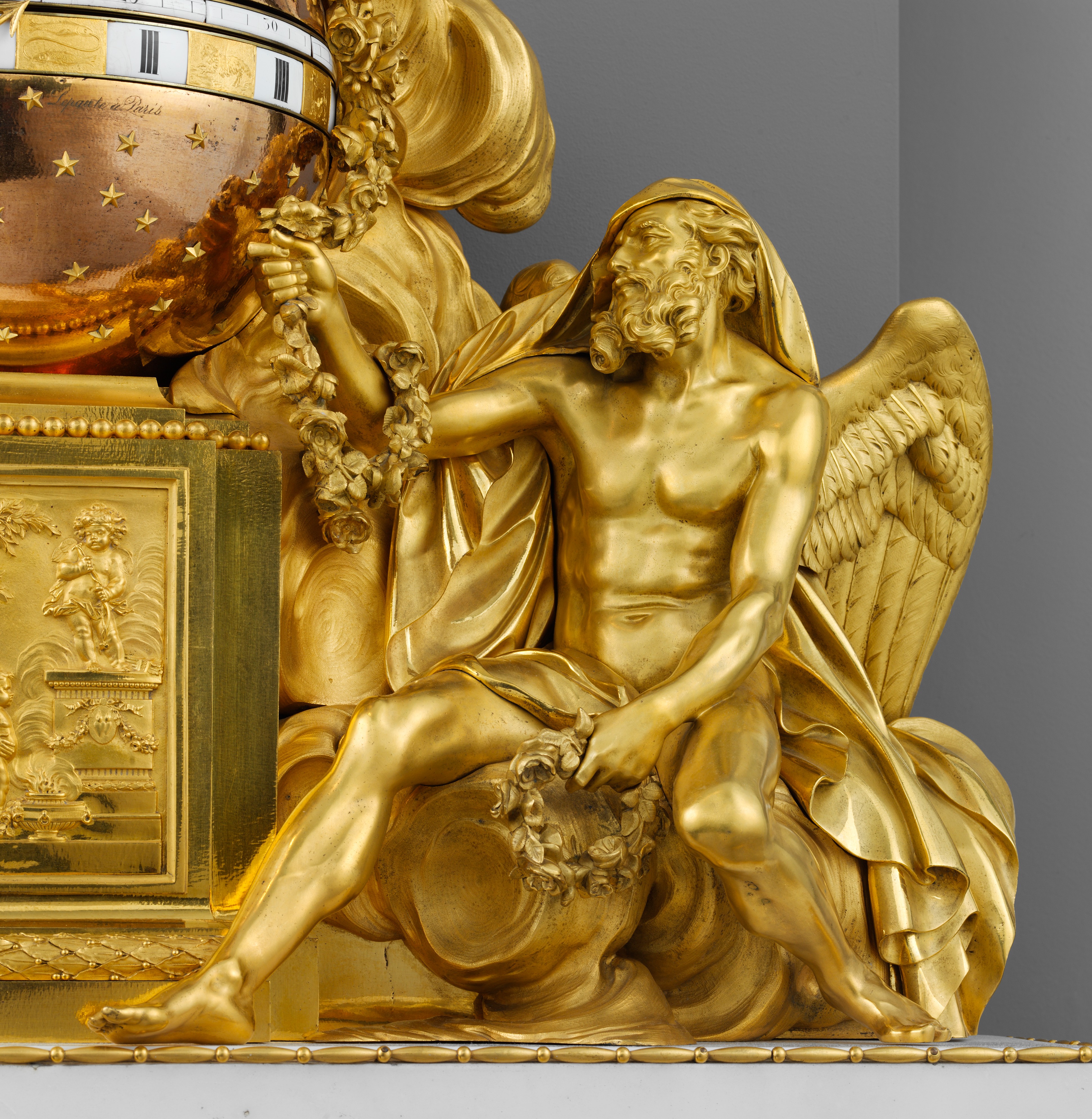The Triumph of Love over Time
Clockmaker: Jean-Baptiste Lepaute French
Figures modeled by Augustin Pajou French
Figures cast by Etienne Martincourt French
This clock illustrates the triumph of love over time. The young god of love points to the minutes with his arrow while holding a blazing torch to the celestial globe that contains two revolving rings between its hemispheres, one with the minutes (5–10) and the other with the hours (I-XII). Chronos, or Father Time, sits dejectedly at the right. The figures, modeled by Augustin Pajou (1730–1809), were taken from a more complex design for a clock made by the royal sculptor in 1775 for the prince de Condé and were probably cast by Étienne Martincourt (active 1762–1800). The subject of the relief on the pedestal is a sacrifice to Eros. At this time, the workshop of the Lepaute family consisted of Jean-Baptiste (1727–1802), named horologer du roi in 1775; Pierre, called Henry Lepaute (1749–1806); and Pierre-Bazile, called Sully-Lepaute (1750–1843). The gilt bronze is beautifully finished and the contrast between the burnished and matte areas is particularly striking.
Due to rights restrictions, this image cannot be enlarged, viewed at full screen, or downloaded.
This artwork is meant to be viewed from right to left. Scroll left to view more.







